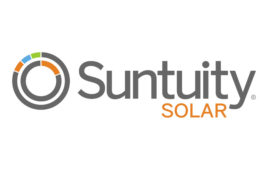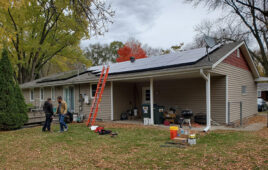As school districts struggle to adapt to a nationwide budget crisis brought on by the COVID-19 outbreak, certain K-12 schools are shoring up budgets with a switch to solar power, often with minimal to no upfront capital costs. Since 2014, K-12 schools saw a 139% increase in the amount of solar installed, according to a new report from clean energy nonprofit Generation180, in partnership with The Solar Foundation and the Solar Energy Industries Association (SEIA).
The report finds that 7,332 schools nationwide use solar power, making up 5.5% of all K-12 public and private schools in the United States. Over the last 5 years, the number of schools with solar increased by 81%, and now 5.3 million students attend a school with solar. The top five states for solar on schools are California, New Jersey, Arizona, Massachusetts and Indiana.
“Solar is absolutely attainable for all schools — regardless of how sunny or wealthy it is where you live. Too few schools realize that solar is something they can take advantage of to save money and benefit students today,” said Wendy Philleo, executive director of Generation180. “Schools that switch to solar can put energy cost savings toward return-to-school preparations, such as installing ventilation systems, or toward retaining teachers and preserving essential programs.”
Energy costs are the second largest expense for U.S. schools after personnel. Report authors note that school districts can save significantly on energy costs over time. For example, Tucson Unified School District in Arizona expects to save $43 million over 20 years, and in Arkansas, the Batesville School District used energy savings to become the highest-paying school district in the county with teachers receiving up to $9,000 per year in raises.
The study finds that the majority of schools go solar with minimal to no upfront capital costs. According to the report, 79% of the solar installed on schools was financed by a third party, such as a solar developer, who funds, builds, owns and maintains the system. This allows schools and districts, regardless of the size of their budget, to purchase solar energy and receive immediate energy cost savings. Power purchase agreements (PPA) are a popular third-party arrangement currently available in 28 states and the Washington, D.C.
Schools are also capitalizing on solar projects to provide students with hands-on STEM learning opportunities, job training and internships for solar careers.
“Solar installations support local jobs and generate tax revenue, but they can also help schools put energy savings toward other upgrades and better support their teachers,” said Abigail Ross Hopper, president and CEO of SEIA. “As we think of ways we can rebuild better, helping schools make the switch to solar + storage can uplift our communities, drive our stalled economy, and insulate our schools from the effects of climate change. It’s rare to find a solution that can solve many challenges at once and we hope Congress will recognize that solar can also play a vital role in our communities,” she added.
In addition, schools with solar and battery storage can also serve as emergency shelters and provide backup power during grid outages, which not only prevents classroom disruptions but also serves as a vital resource for communities.
“At a time when the global pandemic and climate change bring emergency preparedness into sharp focus, schools with solar and storage can become centers of community resilience that provide vital support to their communities during natural disasters,” said Andrea Luecke, president and executive director at The Solar Foundation. “We hope this report will be an important resource to help school districts lead the way toward a clean energy future.”
This third edition of “Brighter Future: A Study on Solar in U.S. Schools” provides the most comprehensive study to date on solar uptake and trends at public and private K-12 schools nationwide and includes several school case studies. The report website includes an interactive map of solar schools across the nation, along with other resources to help school districts go solar.
News item from Generation180





Tell Us What You Think!